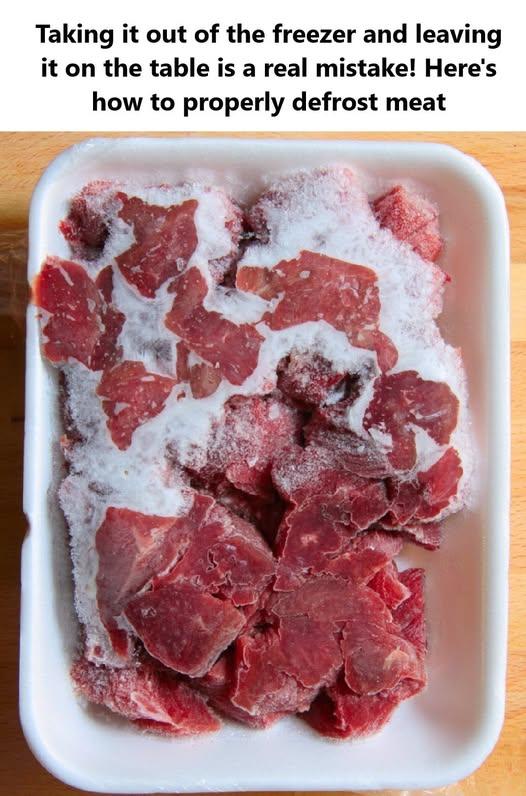ADVERTISEMENT
3. The Microwave Method: Fast and Convenient, But Not Ideal for All Meats
When you’re really short on time, the microwave can defrost meat quickly. However, this method is not ideal for every type of meat. While it’s great for smaller cuts like chicken breasts or ground beef, larger cuts may end up partially cooked on the outside before the inside is thawed.
How to Do It:
- Step 1: Remove the meat from its packaging and place it on a microwave-safe dish.
- Step 2: Use the defrost setting on your microwave, adjusting the weight and type of meat if necessary. Many microwaves have specific defrost settings based on the type of meat (poultry, beef, pork, etc.).
- Step 3: Check the meat every few minutes to ensure it’s not beginning to cook. Rotate or flip the meat if your microwave doesn’t defrost evenly.
- Step 4: Cook the meat immediately after it has thawed, as microwaving can partially cook some areas of the meat, making it susceptible to bacterial growth if left at room temperature.
Tip: Avoid defrosting meat in the microwave if it’s a large roast or thick cut, as it’s hard to evenly thaw these in such a small appliance.
4. Defrosting Meat on the Counter: A Risky Method to Avoid
While many people have been taught to leave meat on the counter to thaw, this is not a safe method. Leaving meat out at room temperature for extended periods encourages bacteria to grow, increasing the risk of foodborne illness. The USDA advises against defrosting meat at room temperature, as it can lead to unsafe conditions and potentially make the meat hazardous to eat.
Can You Cook Meat from Frozen?
In a pinch, it’s possible to cook meat directly from frozen, especially smaller cuts like chicken breasts or ground meat. However, this method is generally less efficient because the meat will take longer to cook, and the final texture may not be as tender as properly thawed meat. You also have to ensure that the meat is cooked thoroughly to avoid food safety issues.
When to Cook from Frozen:
- Chicken breasts or thighs
- Ground meat
- Smaller cuts of beef or pork
For larger cuts like roasts or whole chickens, it’s best to thaw the meat first to ensure it cooks evenly.
How to Avoid Defrosting Problems in the Future
To make your life easier and prevent stress over defrosting, here are a few tips to keep in mind:
- Plan Ahead: The best way to avoid the defrosting dilemma is to plan your meals in advance. Move meat from the freezer to the fridge the night before, so it’s ready to cook the next day.
- Use a Freezer-Friendly Bag: When freezing meat, use airtight freezer bags or vacuum-sealed bags to prevent freezer burn. This will keep the meat fresh longer and reduce the risk of texture changes when defrosting.
- Cut Meat into Smaller Portions: If you typically buy large cuts of meat, consider cutting them into smaller portions before freezing. This makes it easier and faster to thaw exactly what you need.
- Don’t Refreeze Thawed Meat: Once meat has thawed, it should be cooked within a few days. Refreezing meat that’s already been thawed can affect its quality and safety.
Conclusion: Defrosting Meat Made Easy
While defrosting meat may seem like a simple task, doing it correctly is essential for food safety, quality, and taste. Whether you have time to plan ahead and use the refrigerator method or you’re in a hurry and need to use the cold water or microwave method, knowing the best practices will help you safely thaw your meat.
By following these expert tips, you can ensure your meals are safe, delicious, and free from any worries about harmful bacteria. So, next time you’re in a pinch, try one of these safe and efficient defrosting methods, and you’ll be ready to enjoy your meal in no time!
ADVERTISEMENT
